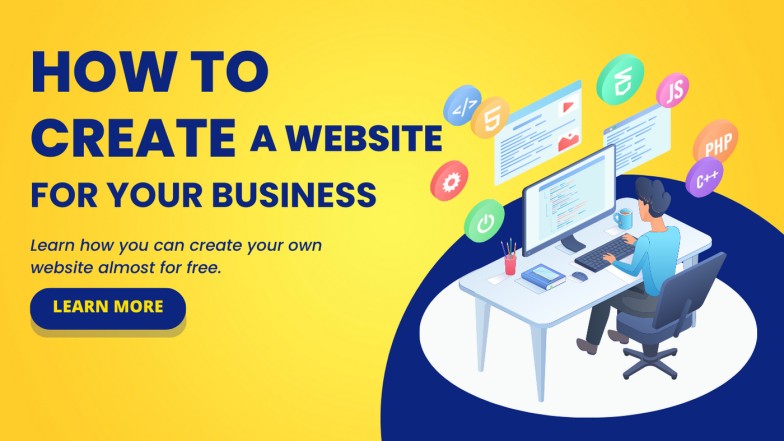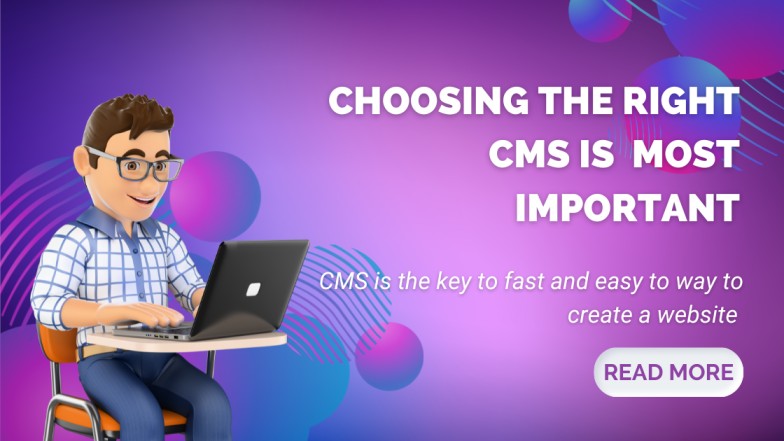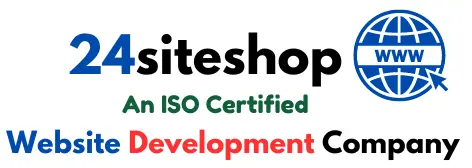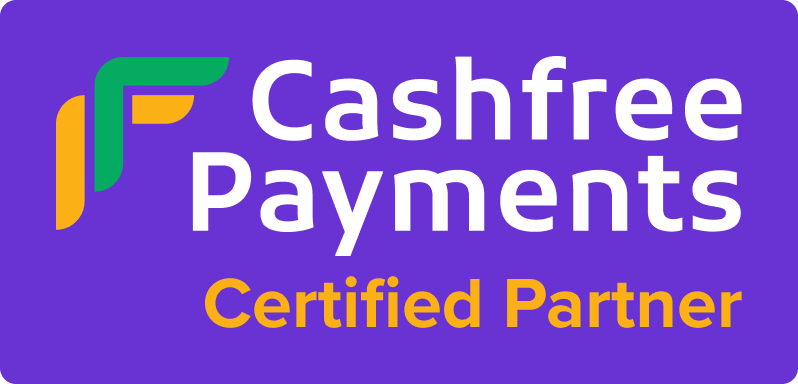
Table of Contents
In the ever-evolving business environment of today, cultivating an online presence has transitioned from being a luxury to an absolute necessity. Crafting a well-designed website is paramount—it functions as a virtual storefront, providing a platform to exhibit products or services, and stands as a potent tool for engaging with potential customers. Whether you’re a seasoned entrepreneur or embarking on your initial business venture, comprehending the process of ‘How to Make a Website for My Business’ is imperative for achieving success in this digital era.
Embark on the Journey of Website Creation : How to Make a Website for My Business
The process of creating a website can seem daunting at first, but with careful planning and strategic execution, it can be an empowering and rewarding experience. Here’s a step-by-step guide to navigate the world of website creation and establish a strong online presence for your business:
Define Your Goals and Target Audience:
Before diving into the technical aspects, take a moment to clearly define your website’s objectives. What do you want to achieve with your online presence? Are you aiming to increase brand awareness, generate leads, or drive online sales? Once you have a clear understanding of your goals, identify your target audience. Who are you trying to reach with your website? Understanding their preferences, demographics, and online behavior will guide your design and content choices.
Choose a Website Builder or CMS:
Website builders and content management systems (CMS) have revolutionized the way websites are created, making them accessible even to those with limited technical expertise. These platforms provide user-friendly interfaces, pre-designed templates, and drag-and-drop tools, simplifying the website creation process. Popular options include Wix, Squarespace, and WordPress.com.
Select a Domain Name and Hosting:
Your domain name is your website’s address on the internet, while hosting is the service that stores your website’s files and makes it accessible to visitors. Choose a domain name that is memorable, relevant to your business, and easy to type. Opt for a reliable hosting provider that offers sufficient storage, bandwidth, and customer support to meet your website’s needs.
Design a User-Friendly and Visually Appealing Website:
The importance of your website’s design in enhancing user experience and shaping brand perception cannot be overstated. Aim for a streamlined layout, easy navigation, and incorporate high-quality images and consistent branding elements. Harmonize your color scheme with your brand identity. Additionally, prioritize mobile optimization, considering the substantial traffic from smartphones and tablets. Learn more about optimizing your website for success with ‘How to Make a Website for My Business.
Craft Compelling and Informative Content:
Content is the heart and soul of your website. Create high-quality, original content that is relevant to your target audience and provides value. Write informative blog posts, engaging articles, and compelling product descriptions. Regularly update your content to keep your website fresh and relevant.
Optimize for Search Engines (SEO):
Elevate your website’s visibility on search engine results pages (SERPs) through the art of Search Engine Optimization (SEO). Incorporate relevant keywords in your content, meta descriptions, and image alt tags. Establish authority and credibility by building backlinks from reputable websites. Explore the comprehensive guide on ‘How to Make a Website for My Business’ to master the intricacies of effective SEO.
Promote Your Website:
Once your website is live, don’t let it sit in the shadows. Promote it through social media channels, email marketing, and online directories. Engage with your audience, respond to comments, and actively participate in online communities related to your industry.
Here is a detailed Video Guide How to Create a Business Website :
FAQs on Website Creation for Businesses
- How do I create my own business website?
Creating a business website involves several steps, including defining your goals, choosing a website builder or CMS, selecting a domain name and hosting, designing a user-friendly and visually appealing website, crafting compelling and informative content, optimizing for search engines (SEO), and promoting your website.
- How much does it cost to start a website for my business?
The cost of creating a business website varies depending on the complexity of the website, the chosen platform, and the hosting plan. However, there are many affordable options available, including free website builders and low-cost hosting plans.
- Is it profitable to start a website?
A well-designed and well-maintained website can be a profitable venture for businesses of all sizes. It can increase brand awareness, generate leads, drive online sales, and enhance customer engagement.
Additional Tips for Website Success :

| Prioritize Mobile-Friendliness | Ensure your website is optimized for viewing on mobile devices. |
|---|---|
| Utilize Social Media Integration | Integrate social media buttons and feeds to encourage engagement. |
| Incorporate Calls to Action | Provide clear instructions on what you want visitors to do, such as contacting you or making a purchase. |
| Monitor and Analyze Website Performance | Use analytics tools to track website traffic, identify popular pages, and optimize your content accordingly. |
By following these guidelines and embracing the power of
More on Website Creation for Businesses
Website Creation Tools and Platforms
The internet offers a plethora of website creation tools and platforms, catering to a wide range of needs and skill levels, making it easier for individuals to learn ‘How to Make a Website for My Business.’ These tools simplify the process of website creation, making it accessible even for those with limited technical expertise. Some of the most popular website creation tools include
| Platform | Description |
|---|---|
| Wix | Wix is a user-friendly drag-and-drop website builder that provides a diverse selection of pre-designed templates, intuitive features, and a free plan suitable for basic websites. |
| Squarespace | Squarespace is a popular drag-and-drop website builder known for its sleek design aesthetic and emphasis on blogging and e-commerce. |
| WordPress.com | WordPress.com is a widely used CMS platform offering a free plan with limited functionality. Users need to host their websites on WordPress’s servers. |
| Tumblr | Tumblr is a popular microblogging platform featuring a simple yet powerful website creation tool. It is ideal for businesses prioritizing content sharing and audience engagement. |
Choosing the Right Website Builder or CMS

The best website builder or CMS for your business will depend on your specific needs and preferences. Consider factors such as ease of use, design flexibility, features, pricing, and hosting requirements.
- Ease of Use: If you have limited technical expertise, opt for a builder with a user-friendly drag-and-drop interface and comprehensive tutorials and support, ensuring a smooth experience in learning ‘How to Make a Website for My Business.’
- Design Flexibility: Assess the design flexibility offered by different builders, enabling you to customize templates and layouts to align seamlessly with your brand identity.
- Features: Evaluate the features crucial for your business, whether it be e-commerce capabilities, blog management tools, or seamless social media integration. Select a builder that aligns with your needs when creating a website for your business.
- Pricing: Explore the diverse pricing plans available, ranging from free to premium. Choose a plan that not only fits within your budget but also fulfills your specific requirements for making a website for your business.
- Hosting Requirements: Take note of the hosting requirements imposed by different builders. Some may mandate hosting on their servers, while others permit the use of your preferred hosting provider. This consideration is essential in the context of ‘How to Make a Website for My Business.
Additional Website Creation Resources
In addition to the website creation tools and platforms mentioned above, there are numerous resources available to help you create a professional and effective website for your business. These resources include:
- Website Creation Tutorials: Online resources like YouTube and online tutorials can provide step-by-step guidance on using specific website builders and CMS platforms.
- Creative Commons Images: Creative Commons websites offer a vast collection of free images that you can use on your website without worrying about copyright infringement.
- Font Libraries: Font libraries provide access to a wide range of free and premium fonts that you can use for your website’s typography.
- Website Design Templates: Websites like TemplateMonster and FreePSDTemplates offer pre-designed website templates that you can customize to fit your brand and business needs.
- Website Design Blogs: Blogs like Smashing Magazine and CSS-Tricks provide insightful articles, tutorials, and resources on website design and development.
By carefully considering your website’s goals, target audience, and technical limitations, you can choose the right tools, resources, and strategies to create a website that will effectively represent your business and achieve your online objectives.
Expanding Your Online Reach: Advanced Strategies for Website Promotion
Once your website is up and running, the work doesn’t stop there. Effectively promoting your website is crucial for attracting visitors, generating leads, and ultimately achieving your business goals. Here are some advanced strategies to expand your online reach and make your website a success:
1. Embrace Content Marketing:
The internet offers a plethora of website creation tools and platforms, catering to a wide range of needs and skill levels, making it easier for individuals to learn ‘How to Make a Website for My Business.’ These tools simplify the process of website creation, making it accessible even for those with limited technical expertise. Alongside this, content marketing is a strategic approach to attracting and engaging a clearly defined audience through consistently creating and sharing valuable, relevant, and consistent content to drive profitable customer action. It’s about creating content that resonates with your target audience and establishes your brand as an authority in your industry. Some of the most popular website creation tools include:
- Develop a Content Calendar: Plan your content in advance to ensure a consistent flow of fresh and engaging material.
- Diversify Your Content Formats: Utilize a variety of content formats, including blog posts, infographics, videos, and social media posts, to cater to different preferences and engagement styles.
- Optimize for Search Engines: Implement SEO practices to improve your website’s ranking in search engine results pages (SERPs).
- Promote Your Content: Share your content on social media, engage in online communities, and consider paid advertising options to reach a wider audience.
2. Leverage Social Media Marketing:
Social media platforms offer a powerful avenue to connect with your target audience, build brand awareness, and drive traffic to your website.
- Identify Relevant Social Media Platforms: Focus on the social media platforms where your target audience is most active.
- Create Engaging Social Media Content: Post regularly, share relevant content, and engage with your followers to foster a sense of community.
- Utilize Social Media Ads: Paid social media advertising allows you to target specific demographics, interests, and behaviors to reach a wider audience.
3. Explore Email Marketing:
Email marketing remains an effective tool for nurturing relationships with potential and existing customers.
- Build an Email List: Encourage visitors to sign up for email updates by offering valuable content or incentives.
- Segment Your Email List: Divide your subscriber list into segments based on demographics, interests, or purchase history for targeted messaging.
- Craft Compelling Email Campaigns: Create personalized and informative email campaigns that provide value and encourage engagement.
4. Consider Paid Advertising:
Paid advertising platforms like Google Ads and social media advertising can provide a quick boost in website traffic and lead generation.
- Define Your Advertising Goals: Clearly define what you want to achieve with your paid advertising efforts, whether it’s generating leads, increasing website traffic, or boosting brand awareness.
- Target Your Ads Effectively: Utilize demographic targeting, interest-based targeting, and behavioral targeting to reach the right audience with your ads.
- Track and Optimize Your Campaigns: Regularly monitor your ad performance and make adjustments to improve results.
5. Collaborate with Influencers:
Partnering with relevant influencers in your industry can expose your brand to a wider audience and enhance your credibility.
- Identify Influencers with a Strong Following: Choose influencers who align with your brand values and have a genuine connection with your target audience.
- Develop Mutually Beneficial Partnerships: Establish clear objectives and expectations for your influencer collaborations.
- Track and Measure Influencer Campaign Results: Use analytics tools to assess the impact of your influencer marketing efforts.
By implementing these advanced strategies, you can effectively promote your business website, expand your online reach, and achieve your desired results in the digital landscape. Remember, success in the online world requires a combination of creativity, strategic planning, and continuous optimization.


